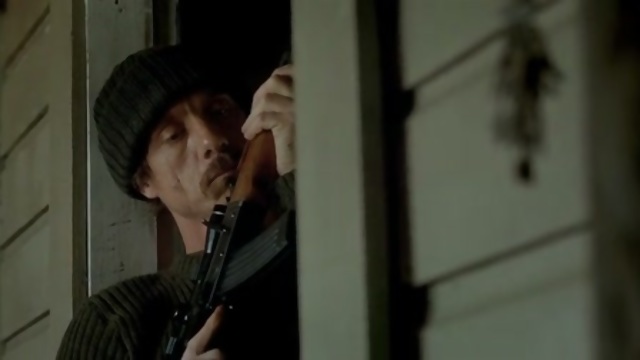Out of the Blue (2006) 

Director: Robert Sarkies
Cast: Karl Urban, Matthew Sunderland, Lois Lawn
Synopsis: Based on the Aramoana Massacre that occurred on 13 November and 14 November 1990. Resident David Gray, an unemployed gun collector, went on a rampage in which 13 people were shot dead, before Gray himself was shot by police.
Out of the Blue is the kind of film that’ll have you looking sideways at that single bloke in his thirties who lives across the road from you. With a complete absence of any kind of dramatic conceit, writer/director Robert Sarkies has managed to produce a powerful film marred only by a lull in proceedings around the 70-minute mark.
Matthew Sunderland plays David Gray, a scruffy loner living in a sleepy village nestling in a picturesque bay. It’s the kind of place where nothing really happens: dogs bark and a lone kid throws a ball against a wall for something to do. Gray used to get on with his neighbour, a middle-aged single father on the cusp of moving in with his new girlfriend but, as Gray has grown increasingly withdrawn their relationship has deteriorated to the point where a mundane domestic argument inexplicably escalates into a shocking massacre. The beginning of the carnage, when it eventually arrives — and Sarkies is very deliberate in slowly introducing us into the lives of a number of Aramoana’s residents; We don’t really get to know them that well, though, only as well as you might know your own neighbour in this day and age — is so understated that you almost find yourself disbelieving what you’ve seen. Gray rattles off a number of shots at near point-blank range. They sound like the report of a kid’s popgun, and his victim stumbles backward and turns, taking five or six steps before eventually falling to the ground. Gray then embarks on a random murder spree, killing anyone who happens to cross his path, irrespective of their age.
The reasons for Gray’s sudden murderous outburst are described only in vague references — inappropriate levels of attention from the local police, his bank’s decision to charge him for cashing a cheque — but the real Gray’s reasons are probably just as enigmatic. While there are no heroes in the accepted cinematic term, as with all tragedies of this nature, individual acts of heroism performed by normal people take place, particularly by an old lady with new hips who crawls from the roadside to her house to raise help for a neighbour she barely knows who has been unlucky enough to catch a couple of Gray’s bullets.
While Sarkies effortlessly sidesteps any tendency towards sentimentality for the most part, there are a few weaknesses in the film, mainly in the way that the fates of a number of those who are stalked by Gray are never really clearly explained. But apart from this, and a noticeable drop in tension towards the climax, the film provides a near-flawless fly-on-the-wall style re-telling of one normal neighbourhood’s devastating tragedy.
httpv://www.youtube.com/watch?v=VijH6syr7rs
